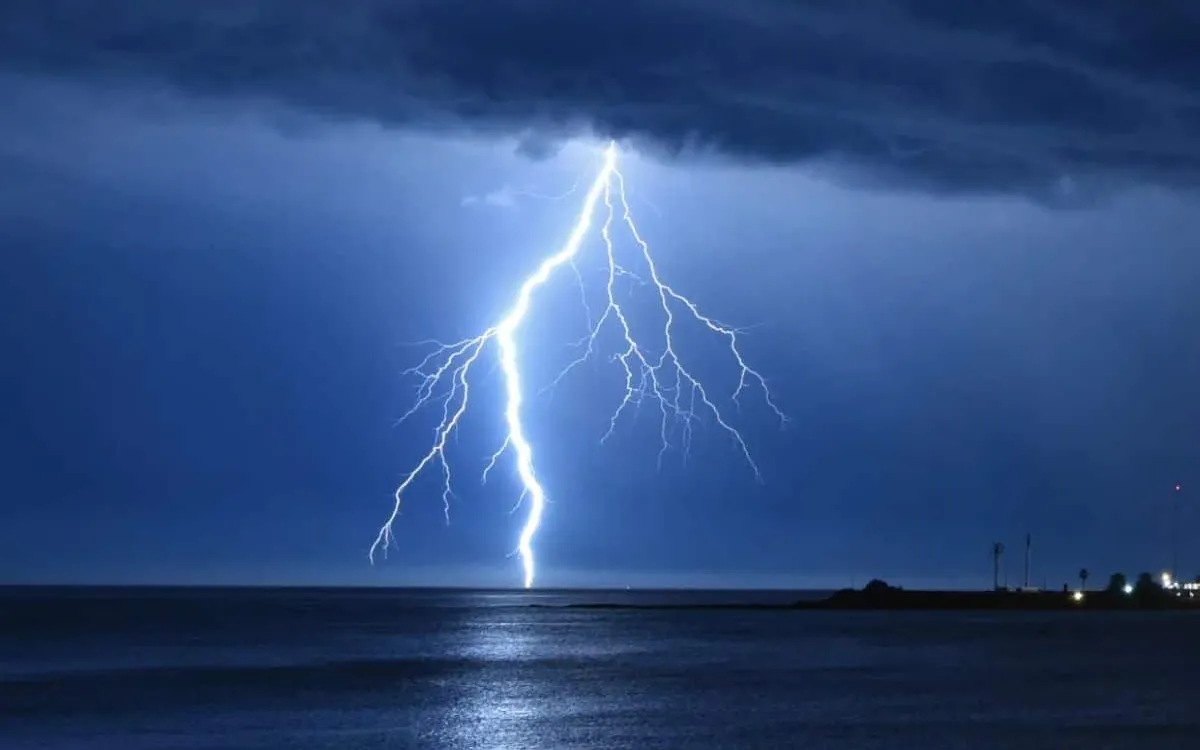
A recent study has unveiled that microscopic lightning bolts, known as microlightning, within water droplets may have played a crucial role in the formation of the very first amino acids on Earth. This groundbreaking research revitalizes and reinterprets one of the most iconic experiments in scientific history, paving the way for a deeper understanding of how life originated on our planet.
The concept of creating life’s building blocks dates back to 1953 when scientists Stanley Miller and Harold Urey conducted a revolutionary experiment. They simulated the early Earth atmosphere by combining ammonia, methane, hydrogen, and water vapor inside a sealed glass chamber, which they then subjected to electrical discharges. This pioneering work resulted in the spontaneous formation of amino acids, the essential components of proteins.
In a recent study published in Science Advances, Dr. Richard Zare, a professor of chemistry at Stanford University, took a different approach by examining the electrical interactions between charged water droplets as small as 1 micron in diameter. “The big droplets are positively charged. The little droplets are negatively charged,” Zare explained to CNN. “When droplets that have opposite charges are close together, electrons can jump from the negatively charged droplet to the positively charged droplet.”
The researchers replicated the gas mixture used by Miller and Urey and then introduced a fine mist into the chamber. Utilizing high-speed cameras, they captured faint flashes that resembled tiny sparks zipping between the droplets. These sparks, referred to as microlightning discharges, instigated chemical reactions that resulted in the creation of amino acids such as glycine and uracil, a nucleotide crucial for RNA.
While the physics and chemistry involved in this study are not entirely new, the scale at which these reactions occur is groundbreaking. “For the first time, we have observed that microscopic droplets emit light and generate sparks,” Zare stated. “That’s a new phenomenon, and these sparks lead to various chemical transformations.”
The significance of microlightning lies in its frequency compared to traditional lightning, which, while spectacular, is infrequent. “Even on a volatile Earth billions of years ago, lightning may have been too rare to produce amino acids in quantities sufficient for life,” Zare noted. In contrast, mist—composed of droplets—was ubiquitous, present in oceans, volcanic sprays, and clouds, making it a more plausible source for the continuous generation of life’s fundamental components.
“Microdischarges between oppositely charged water microdroplets can create all the organic molecules identified in the Miller-Urey experiment,” Zare proposed. “We suggest this represents a new mechanism for the prebiotic synthesis of the molecules that are the building blocks of life.”
Dr. Amy J. Williams, an astrobiologist and geobiologist at the University of Florida, highlighted the importance of energetic catalysts like microlightning. “Lightning, or in this case, microlightning, has the energy to break molecular bonds, facilitating the generation of new molecules vital to the origin of life on Earth,” she elaborated.
This new perspective on microlightning not only enhances our understanding of the chemical processes that may have led to the emergence of life but also emphasizes the potential for further research into the origins of biology on our planet.